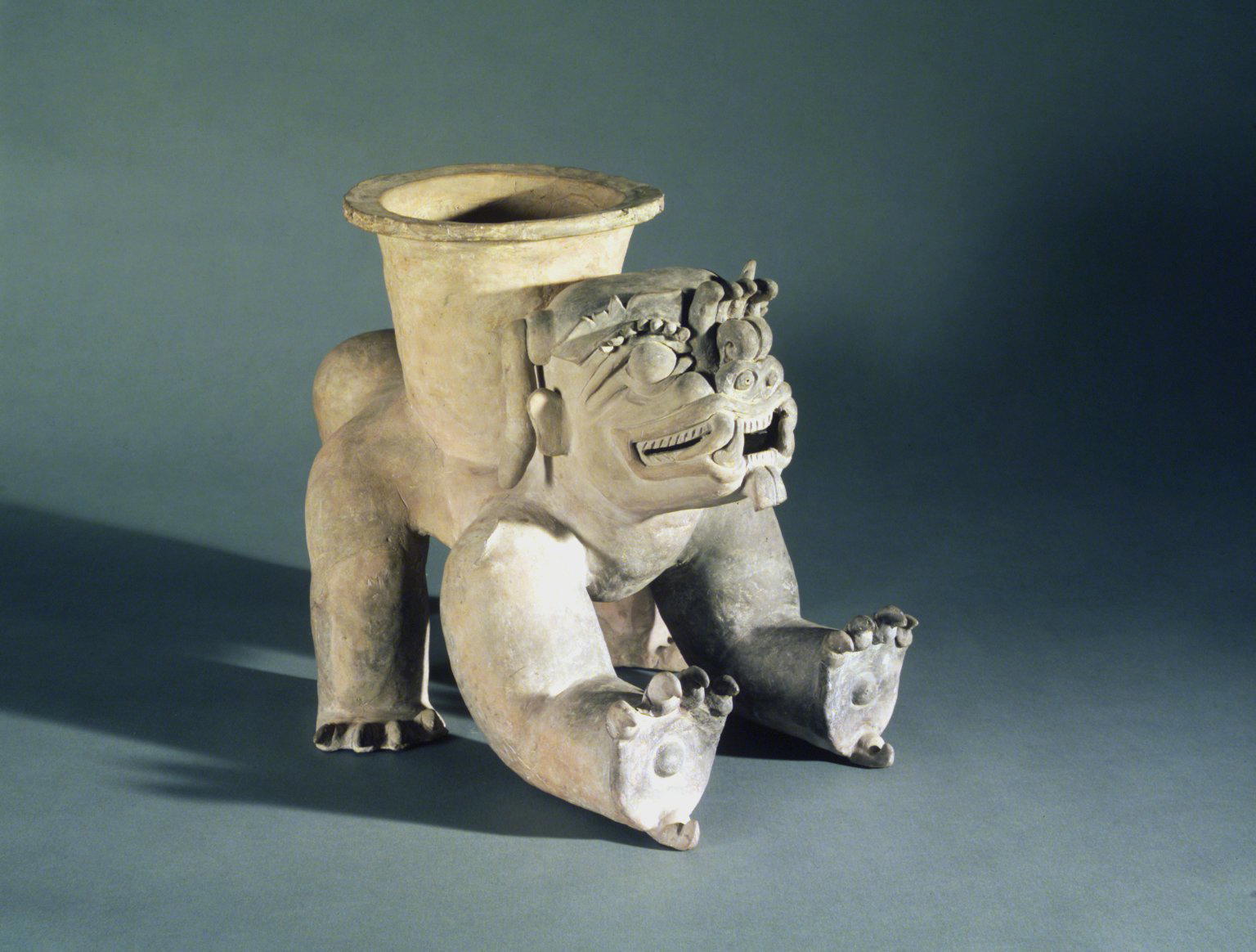Effigy Vessel

Brooklyn Museum photograph
Object Label
The Jama-Coaque culture of Ecuador’s northern coast is known for complex moldmade and hand-modeled ceramic sculptures that depict people and animals. Felines are the most frequently represented animal, indicating their importance as symbols of power. On this modeled effigy vessel, the large jar on the jaguar’s back suggests that the object was ceremonial, perhaps used for ritual offerings. The style of the round, bulging eyes and nose indicates that the jaguar represents a supernatural being.
Caption
Jama-Coaque. Effigy Vessel, ca. 300 B.C.E.–600 C.E.. Ceramic, 12 3/4 x 16 1/4 x 13 in. (32.4 x 41.3 x 33 cm). Brooklyn Museum, Gift of Mr. and Mrs. Tessim Zorach, 88.57.2. (Photo: Brooklyn Museum)
Gallery
Not on view
Collection
Gallery
Not on view
Collection
Culture
Title
Effigy Vessel
Date
ca. 300 B.C.E.–600 C.E.
Period
Regional Developmental Period
Geography
Possible place made: Manabí Province, Ecuador, Possible place made: Esmeraldas Province, Ecuador
Medium
Ceramic
Classification
Dimensions
12 3/4 x 16 1/4 x 13 in. (32.4 x 41.3 x 33 cm)
Credit Line
Gift of Mr. and Mrs. Tessim Zorach
Accession Number
88.57.2
Frequent Art Questions
What would this have been used to hold? Or, is it purely decorative?
 This Effigy Vessel by a Jama Coaque artist would have been used in a ritual context. Most excavated vessels come from burials. While it may have held offerings, it would have been used in such a way during rituals.The jaguar, here shown as a supernatural being, has powerful connotations throughout Meso- and Central America for its prowess as a hunter. You can find other ritual examples from Costa Rica near by!
This Effigy Vessel by a Jama Coaque artist would have been used in a ritual context. Most excavated vessels come from burials. While it may have held offerings, it would have been used in such a way during rituals.The jaguar, here shown as a supernatural being, has powerful connotations throughout Meso- and Central America for its prowess as a hunter. You can find other ritual examples from Costa Rica near by!What is this creature?
 This is a jaguar, which was a powerful symbol throughout Ecuador and neighboring regions. Jaguars were not only powerful predators, but they were seen as animals that could cross all boundaries, as they traveled through water, across land, and into trees, and could see in the dark!
This is a jaguar, which was a powerful symbol throughout Ecuador and neighboring regions. Jaguars were not only powerful predators, but they were seen as animals that could cross all boundaries, as they traveled through water, across land, and into trees, and could see in the dark!How did the Jaguar Effigy Vessel get to the Brooklyn Museum?
The Jaguar Effigy Vessel was a gift to the museum from Mr. and Mrs. Tessim Zorach in 1988.Tessim Zorach was a pre-Columbian Ecuadorian art collector who died in 1995. He donated works to a number of museums, including the Met, and the Brooklyn Museum.
Have information?
Have information about an artwork? Contact us at